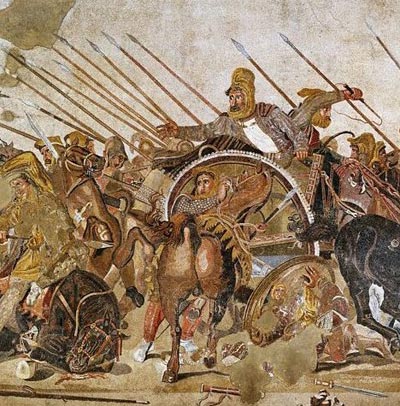Chemical war 2,000 years ago
The traces left in a mass grave of Roman soldiers in 200 AD showed that Persians used chemical weapons very early.
Researchers at the University of Leicester draw conclusions based on findings of a mixture of toxic gases in a tomb of 20 Roman soldiers and weapons found in Syria.
These soldiers were stationed in Dura-Europos, a Roman stronghold on the banks of the Euphrates. They were tasked with protecting the city from the siege of Persia around 256 years.

The new discovery not only shows that Persians know how to use chemical weapons but also note that their military siege tactics have developed.
There is not much historical data about this battle, but according to archaeologists, the Persian army besieged the citadel and dug tunnels through the walls to infiltrate. This tactic was discovered by the Romans and there were clashes in the tunnels. During an encounter, the Persians used to blow poison gas to kill the Roman soldiers. That's why they found weapons in the grave.
Dr Simon James of the University of Leicester said: "A thorough analysis of the location of the bodies showed that they had accumulated in the mouth of the tunnel and were poisoned by the Persians".
The chemical weapons used by the Persian army may be a mixture of SO 2- containing gases produced in flammable substances that often impregnate bullets fired with rockets.
'The discovery is new and somewhat horrifying, the soldiers must have writhed when suffocating. I think this is the oldest archaeological evidence of a chemical weapon ever known, ' said Dr. James.
He said that there was an ancient text about the Greeks who used a similar tactic against the Romans, but this was the first time there was a specific trace.
The new findings also change the notion that Persians are not good at siege. "The Persians are also crafty like the Romans, the walls were not destroyed but the Roman army still failed," said Dr. James.
- How is Syrian chemical weapons
- New Initiative: Storage of information by chemicals
- Chemical formula of human body?
- A close look at chemical reactions
- Confirm the existence of the 117th chemical element
- How to distinguish dishes using chemical colors
- Listen to the exciting ASMR sounds of experiments and chemical reactions
- Where do chemical elements come from?
- Chemical periodic table
- Revealing how America destroys deadly chemical weapons
- Chemical analyzer according to the ionization technique by electronic spray without DESI
- The prophecy of Mrs. Vanga: Chemical war will break out
 Discovered an ancient centipede fossil 99 million years old
Discovered an ancient centipede fossil 99 million years old Discovered bat-like dinosaurs in China
Discovered bat-like dinosaurs in China Discovered a 200-year-old bronze cannon of the coast
Discovered a 200-year-old bronze cannon of the coast Discover 305 million-year-old spider fossils
Discover 305 million-year-old spider fossils